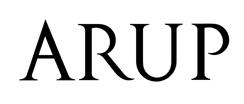- View more resources from this publisher
 Engineers Without Borders UK
Engineers Without Borders UK
Water Supply and Developing Countries
This resource pack can be used to highlight issues such as global water scarcity, the challenges people face when sourcing water and maintaining a water supply in developing countries and the role of the engineers in solving these problems. Following a quick quiz, a presentation introduces the scale of local and global water consumption, the components of water mains infrastructure and what is meant by a developing country.
The presentation can generate discussion about the correlation between water usage affluence, decontamination, health risks, water sources and treatment technologies. The main activity is designed to demonstrate the challenges those in developing countries face to obtain safe drinking water, highlights global water disparity and the need for water treatment. Students are divided into groups and given the task of building a working water filter; the ease of this task will depend on the country that the group is assigned and the access that they have to knowledge and monetary resources.
The countries that students represent are from around the world and vary in their level of wealth and therefore access to resources. In order to build the water filter students must plan, purchase materials, and build the filter using the instructions they are provided with. A comparison is drawn between a young person in a developing country and the students’ own experiences with water. This further demonstrates the difference in quality of life as a result of the availability of a clean water supply. These comparisons are based on real case studies and show case work of aid agencies.
The lesson concludes with discussion on what students can do both locally and globally to address water supply and conservation issues. Background information and ideas for further discussion are provided, together with student worksheets and instructions. These resources were produced by Water for the World, a collaboration between Engineers Without Borders UK and Arup, a global firm of consulting engineers, in order to stimulate thought on global water sustainability
Show health and safety information
Please be aware that resources have been published on the website in the form that they were originally supplied. This means that procedures reflect general practice and standards applicable at the time resources were produced and cannot be assumed to be acceptable today. Website users are fully responsible for ensuring that any activity, including practical work, which they carry out is in accordance with current regulations related to health and safety and that an appropriate risk assessment has been carried out.
Downloads
-
Facilitator's pack 1.27 MB





